The German shepherd is a medium to large-sized herding dog that was originally bred in Germany to do the work of a sheepdog — herding sheep in the mountains. German shepherds are also commonly known as GSDs, shepherd dogs, and Alsatian shepherds.
This breed can weigh as much as 95 pounds and reach a wither height of 26 inches.
Homes that are ideal for GSDs include those with children, farms, and homes with fitness enthusiasts.
Puppies with a pedigree cost between $900 and $3,500.
TABLE OF CONTENTS
German Shepherd Characteristics & Overview
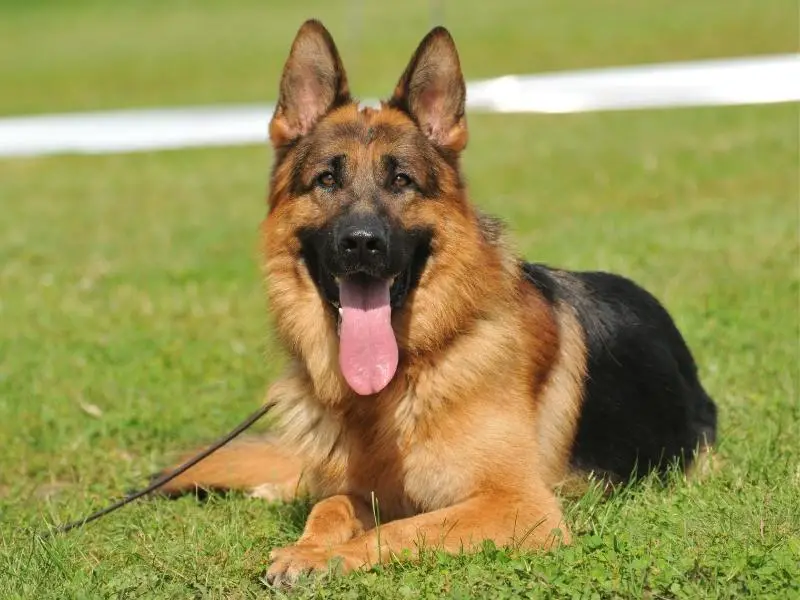
From Adobe Stock
| Common names: | German shepherd, GSD, shepherd dog, Alsatian shepherd |
| Origin: | Germany |
| Breed group: | Shepherd or herding dog |
| Size: | Medium to large |
| Height: | 24–26 inches (males) 22–24 inches (females) |
| Weight: | 75–95 pounds |
| Colors: | Black and tan, black and red, and other color variations |
| Coat: | Double coat, medium length |
| Life expectancy: | 12–13 years |
| Temperament: | Trustworthy, loving, friendly, obedient, courageous |
| Shedding: | Moderate–heavy shedders |
| Barking tendency: | Loud barking to alert owners |
| Cost: | $900–$3,500 |
Origin & Purpose
German shepherds were originally bred in Germany to work as herding dogs. The first breeding was undertaken by Captain Max von Stephanitz of the German cavalry. He experimented with breeding older sheepdog species, with the aim to create a better working dog.
His efforts created the genetic makeup of the German shepherd in the late 1800s.
Lifespan
A German shepherd has an average life expectancy of 12–13 years. Females live an average of 1.4 years longer than male dogs, reaching an average age of 11 years. Males tend to live to 9 years.
There are several factors that can influence these dogs’ lifespan, including diet, level of exercise, and genetic conditions.
German Shepherd Appearance
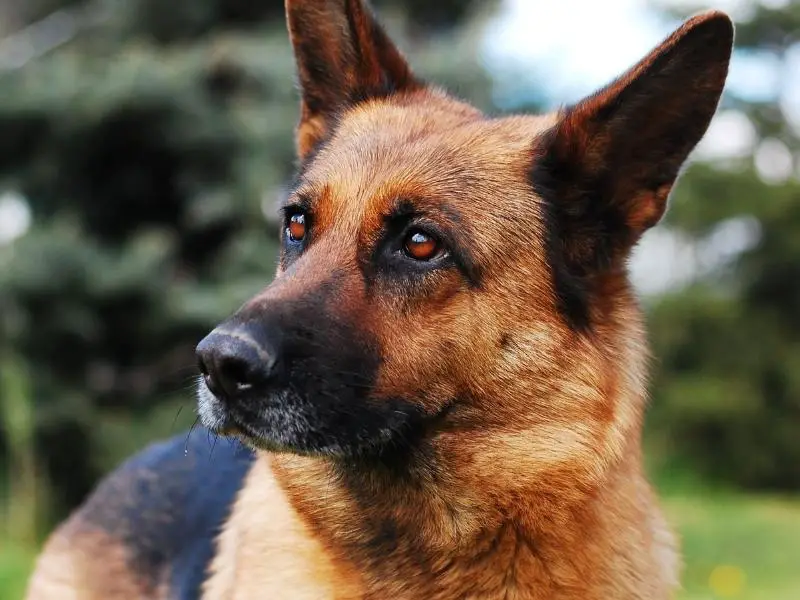
From Adobe Stock
German shepherds are heavily built dogs, ideal for security and guard work. The breed is known for its wolf-like appearance, with raised shoulders and a dropped hindquarter.
These dogs have a long spine, giving them a lean appearance despite their bulk. There are over 13 color variations available. However, breeders focus on selling the traditional colors that the breed is known for, such as black and tan or black and red.
Height and Weight
German shepherds are considered medium or large-sized dogs. They have an average height at the withers of 24–26 inches for males and 22–24 inches for females. The average weight of these dogs is 70–95 pounds.
Male German shepherds weigh more than females, and a one-month-old male puppy weighs 9 pounds, while a female puppy at the same age weighs 8 pounds. As adults, this difference increases. Fully mature three-year-old males weigh 88–95 pounds, while a female three-year-old weighs 70–75 pounds.
Colors
German shepherds are available in up to 13 different colors and color combinations. Not all of these colors are recognized by the GSD breeding societies. Only the black-and-tan and black-and-red color combinations are acknowledged by the American Kennel Club (AKC) for competing in shows. However, dogs of this breed are available in solid colors of full black, full white, and full red, too.
In addition to these basic colors, there are also different color combinations according to the position of the colors, such as a black saddle pattern.
Coat
The German shepherd is a double-coated dog. It has an outer coat of longer hair that sheds all year long, and an inner coat of shorter, fluffy hair that has evolved to protect the breed from the cold.
Some of these dogs have longer hair, though the gene for this condition is recessive, so long-haired GSDs are rare. At the end of winter, they begin to shed their inner coats. Seasonal shedding can be high maintenance in terms of care.
Ears
When German shepherds are puppies, their ears are lined with soft cartilage, which hardens by the time the dog is a year old. This creates the characteristic stiff-ear appearance of this breed. The purebred’s ears should be wide apart and set high on the head.
First-time GSD owners may worry that their puppy’s ears won’t stiffen into the correct shape. After the teething period, at around six months, the dog’s ears start to assume the correct shape.
Personality and Temperament
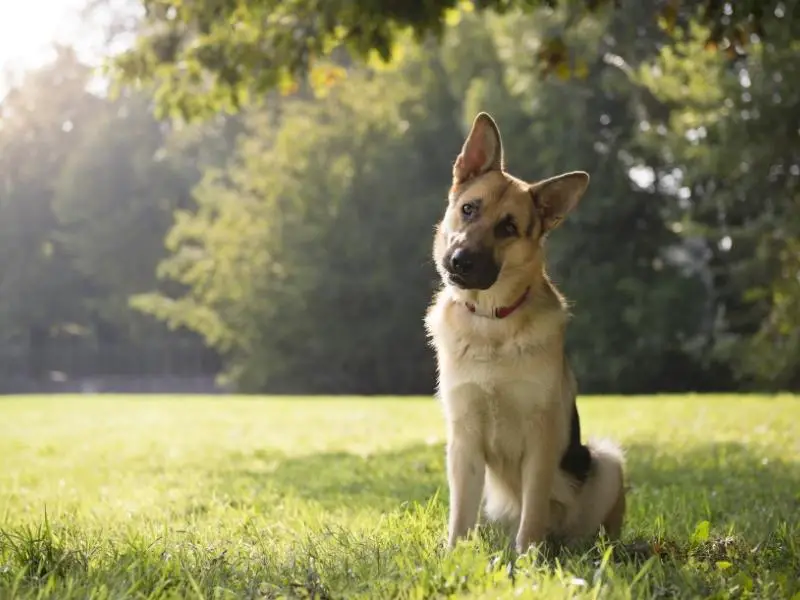
From Adobe Stock
By nature, German shepherds are fearless and loyal. Trained as a service dog, this breed’s ability to guard its flock and guard against intruders requires a fearless nature and temperament. With that said, the breed is also loving and loyal.
Some German shepherds are known for being jealous of other dogs, and this may require further training to keep the dog from fighting with other dogs or attacking visitors.
The breed is possessive of its family, and strangers are instinctively kept away from the dog’s “flock.”
Barking
A German shepherd is not known to bark much, as long as the dog is correctly stimulated and has received some basic training. This breed has a very loud bark, and owners won’t be able to shout louder than the shepherd if it is in the middle of a barking spell.
Instead, a different training method is required to teach the dog not to bark incessantly or too loudly.
The deep, throaty growl of a German shepherd is also enough to scare off intruders. When agitated or excited, the dog will howl or sing loudly.
German Shepherd Care

From Adobe Stock
German shepherds have specific care needs that include grooming, correct feeding, and regular vet checks to monitor for genetic diseases and conditions.
Caring for this breed is no different from caring for most large breed dogs. Unlike some smaller breed dogs that have specific health needs, this shepherd is a robust K-9.
Food Needs
How to feed a German shepherd depends on the dog’s age, level of activity, sex, and health.
Puppies should be fed three to four meals a day, with the daily feeding mass being 4 ounces from two months of age. By the time the dog is fully grown, it should eat 24 ounces a day, depending on its level of activity and gender. Males typicaly eat more than females.
Grooming Needs
German shepherds should be brushed daily to remove the loose overcoat that sheds all year round. Since bathing is mostly kept for when they have found a muddy spot to roll in, these dogs can be bathed every three to four months. Daily brushing is essential to maintain healthy hair and help remove shedding hair.
These dogs rarely need their toenails clipped, unless the dogs have been unable to run on a hard surface like concrete, stone, or sand where the nails are naturally shortened.
Exercise Needs
German shepherds are hardy dogs that require lots of exercise. A healthy adult should have at least 90 minutes of daily running or outdoor play. These dogs were bred to be active dogs that run and work, so leaving them inside for too long isn’t beneficial.
When these dogs don’t have enough space to run and play or don’t get exercised daily, they may become overweight. This results in additional strain on the dogs’ joints and early onset arthritis.
Mental Needs
German shepherds can easily become bored and destructive, especially if they are the only pet in the house.
Provide mental stimulation with toys, activities, and training or tricks. Focus on stimulating the dogs’ senses with sounds, smells, tastes, and movement for at least 30–45 minutes a day — in addition to the time spent walking.
Common Health Concerns
Some of the health issues German shepherds are known for include hip and elbow dysplasia, gastric dilatation-volvulus or bloat, epilepsy, diabetes, and cataracts.
Dysplasia often has its roots in genetic defects in the joints due to inbreeding. Taking x-rays while the dog is a puppy can help rule out dysplasia or identify it early.
Bloat is an extended, painful stomach, and is characterized by abdominal pain and crying after meals. Epilepsy, diabetes, and cataracts are often caused by genetic factors. Appropriate feeding and health management can help limit the effects of each health issue.
Training
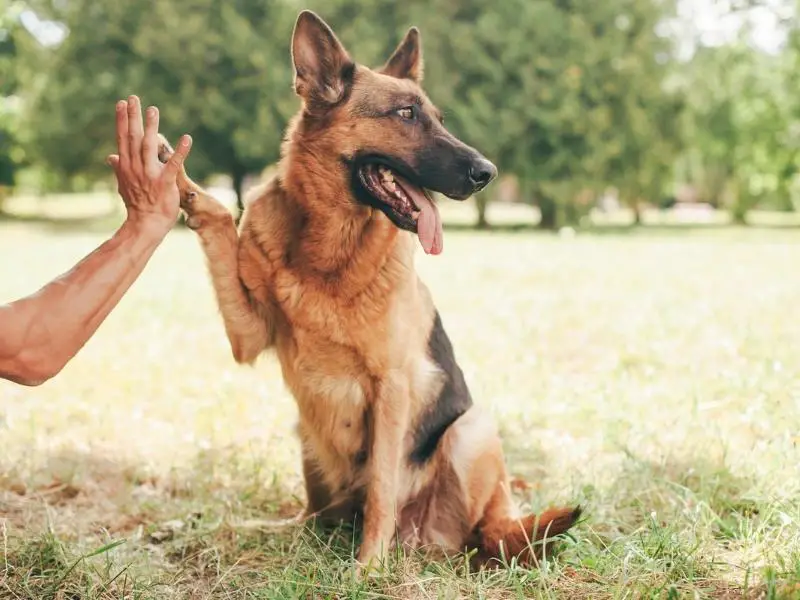
From Adobe Stock
Training a German shepherd is relatively easy and can start at an early age with simple tasks like sitting, waiting to be fed, lying down, rolling over, giving a paw, and walking on the lead.
Recommended training includes basic obedience, agility, trick, and advanced training to obey specific commands. German shepherds can also be trained as service dogs, though this training takes much longer and is the terrain of specialized trainers. The scope of training with a dog of this breed is endless.
German Shepherd Price
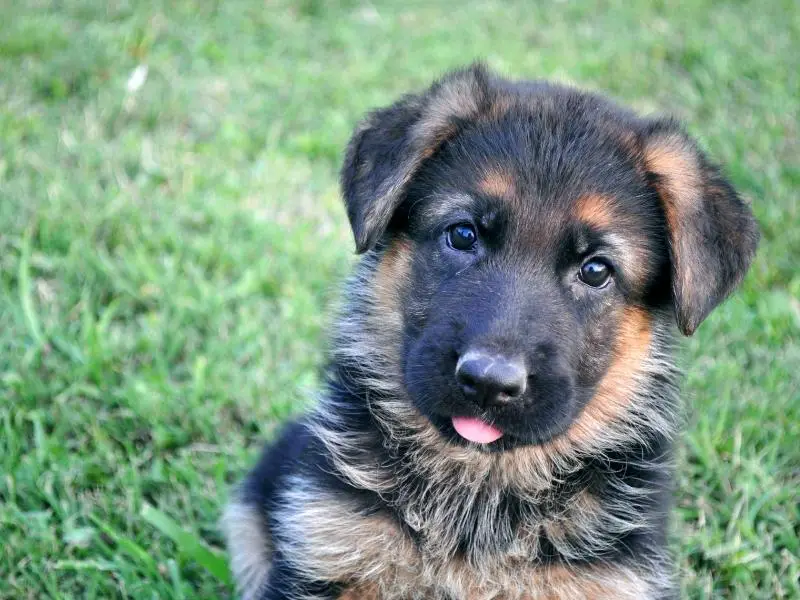
From Adobe Stock
The cost of a German shepherd depends on whether the dog is adopted from a shelter, has been purchased from a renowned breeder, or is rescued. Pedigree dogs will cost more than those with questionable breeding.
How Much Is a German Shepherd?
Depending on the German shepherd’s pedigree, a puppy can cost $80 to $3,500. If the puppy is from a show line known to deliver further show-quality puppies, the price is even higher.
How Much Does it Cost to Own a German Shepherd?
The price of owning a German shepherd depends on the area you live in. Aside from the regular costs of feeding, grooming, and routine vet costs, expect to pay between $100–$250 per month for the dog’s care and needs, including training and enough toys to keep the dog’s mind busy.
These dogs eat a moderate amount compared to other large dog breeds. Monthly costs of food for these dogs can be above $75 for a decent quality dry kibble dog food.
Professional grooming is also worth the cost — averaging $75 or more for full-service grooming — especially since a dog of this breed will be running around to get exercise, and may pick up ticks or require frequent bathing.
Dog owners spend between $500–$1,000 per year on their German shepherds.
Is a German Shepherd Right for You?

From Adobe Stock
German shepherds are amazing dogs. The breed’s energy and powerful presence always draw attention, and most dog-loving kids dream of one day owning their own. However, a German shepherd is not an easy dog, and sadly, many of them end up in shelters.
Who Should Get A German Shepherd?
If you have a large yard and teenagers or children who will play with and train the dog, then you are an ideal match to get a German shepherd. Owners should have enough available time to go running with the dog, and owners should enjoy the daily task of grooming and caring for their dog. Active people in their early 20s to 40s are ideal matches for these energetic dogs.
Who Shouldn’t Get A German Shepherd?
If you live in a small apartment, work long hours, or don’t like a messy house, then German shepherds won’t be suitable for you. Likewise, if you have small children who occupy a lot of time or you don’t want an active dog, then the breed isn’t a great fit.
Because this breed needs exercise and mental stimulation, owners need to have time, energy, and patience to train, exercise, and develop their dog to its full potential.
German Shepherd Mixes
German shepherds have been crossbred to create some beautiful and unique designer dog hybrids. If you like GSDs, you may be interested in some of the following mixes:
- German Shepherd Husky Mix
- Australian Shepherd German Shepherd Mix
- German Shepherd Poodle Mix
- German Shepherd Wolf Mix
- Border Collie German Shepherd Mix
- German Shepherd Rottweiler Mix
- German Shepherd Boxer Mix
- Great Pyrenees German Shepherd Mix
- German Shepherd Beagle Mix
- German Shepherd Golden Retriever Mix
- Golden Shepherd
- German Shepherd Pitbull Mix
- German Shepherd Lab Mix

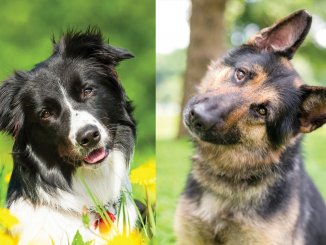
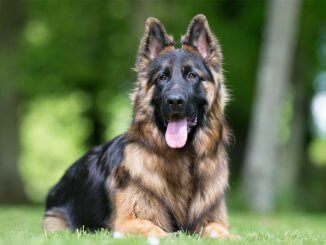
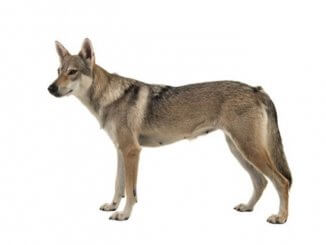
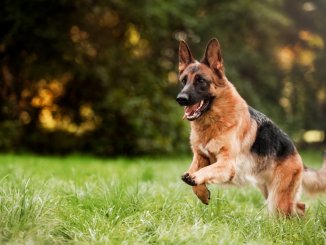


Be the first to comment